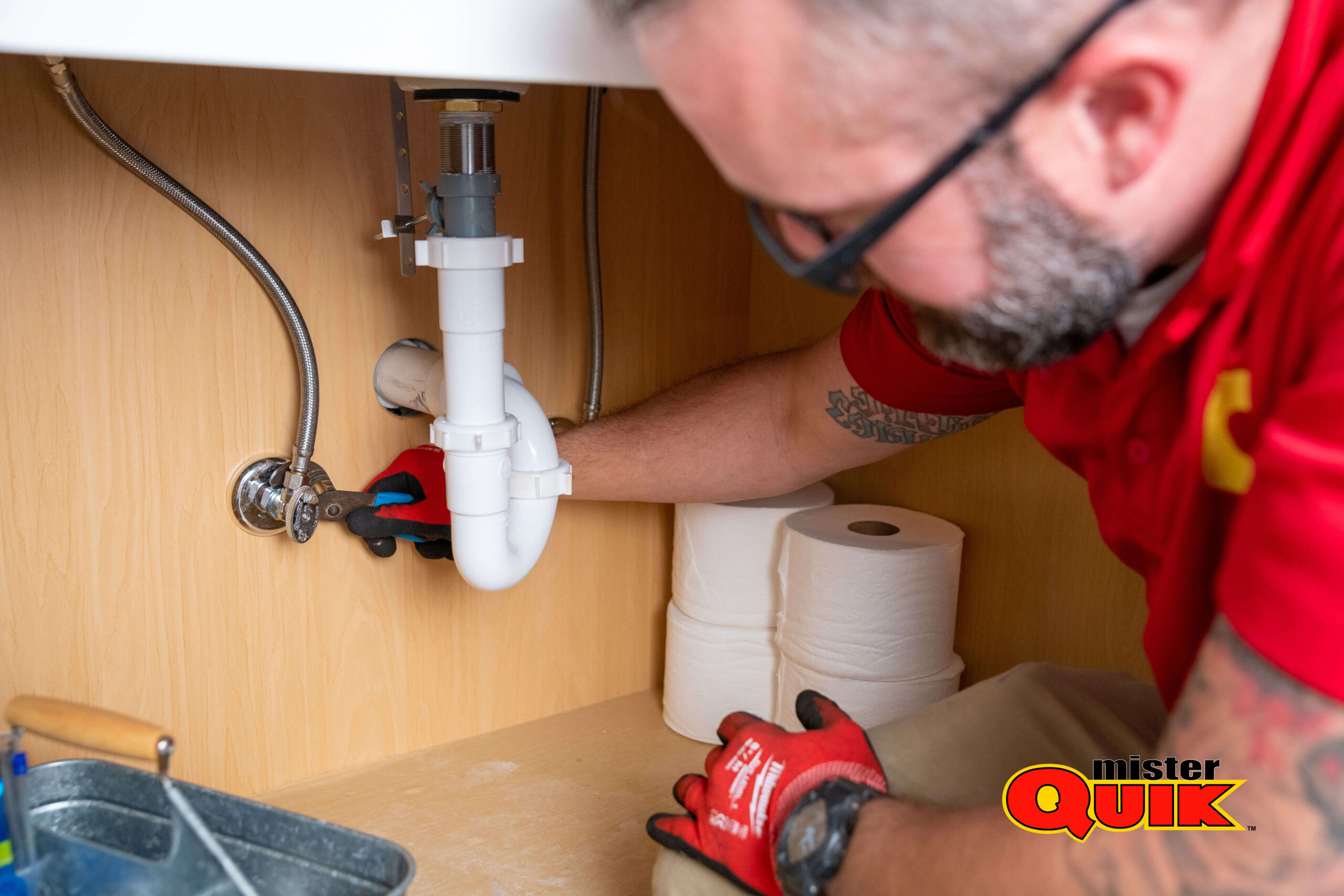Best water heater flush services Greenwood

Water heater flush near me
When it comes to maintaining the efficiency and longevity of your water heater, regular flushing is essential. If you’re in Greenwood and searching for a reliable service provider to perform a water heater flush, look no further than Mister Quik Home Services. Here’s why our water heater flush service stands out:
- Expertise: Our team consists of skilled technicians who are trained to handle various types and models of water heaters. Whether you have a traditional tank-style heater or a tankless unit, we have the expertise to perform a thorough flush.
- Prevents Sediment Buildup: Over time, sediment, minerals, and other debris can accumulate inside your water heater tank. This buildup can not only reduce the efficiency of your heater but also lead to corrosion and other issues. A regular flush helps to remove these deposits, ensuring optimal performance.
- Improves Efficiency: Sediment buildup acts as an insulating layer, making it harder for your water heater to heat the water effectively. By flushing out the sediment, your water heater can operate more efficiently, resulting in lower energy bills and faster hot water delivery.
- Extends Lifespan: Regular maintenance, including flushing, can significantly extend the lifespan of your water heater. By reducing the strain on the system and preventing corrosion, you can avoid costly repairs or premature replacements.
- Enhances Water Quality: Sediment buildup not only affects the performance of your water heater but can also impact the quality of your hot water. Flushing helps to remove impurities, resulting in cleaner, fresher-tasting water for your household.
- Prevents Corrosion: Sediment accumulation can lead to corrosion inside your water heater tank, which can ultimately cause leaks or other damage. Flushing removes corrosive elements, helping to protect the integrity of your water heater and preventing costly leaks.
- Maintains Warranty Compliance: Many water heater manufacturers recommend regular maintenance, including flushing, to keep your warranty valid. Our professional flushing service ensures that your water heater stays in compliance with warranty requirements, giving you peace of mind.
- Customized Solutions: At Mister Quik Home Services, we understand that every home and water heater is unique. That’s why we tailor our flushing service to meet your specific needs, taking into account factors such as the age and condition of your water heater.
- Convenient Scheduling: We know that your time is valuable, which is why we offer flexible scheduling options to accommodate your busy lifestyle. Whether you need a one-time flush or want to set up regular maintenance appointments, we make it easy to keep your water heater in top condition.
- Trusted Service: With years of experience serving homeowners in Greenwood and the surrounding areas, Mister Quik Home Services has earned a reputation for excellence. You can trust us to provide reliable, professional service and ensure that your water heater continues to perform at its best.
Don’t wait until your water heater starts acting up. Schedule a water heater flush with Mister Quik Home Services today and enjoy reliable hot water for years to come.
Water heater flush average cost Greenwood
Curious about the cost of a water heater flush in Greenwood? At Mister Quik Home Services, we understand the importance of transparency when it comes to pricing. Here’s what you can expect in terms of cost for a water heater flush:
On average, the cost of a water heater flush in Greenwood typically ranges from $100 to $300. This price may vary depending on factors such as the size and type of your water heater, the extent of sediment buildup, and any additional services needed. At Mister Quik, our basic tanked model water heater flush is only $69!
Larger water heaters with higher capacity tanks may require more time and resources to flush thoroughly, which can impact the overall cost.
The type of water heater you have can also influence the cost of a flush. Traditional tank-style water heaters may be easier and less time-consuming to flush compared to tankless or hybrid models, which could affect the price.
If your water heater has significant sediment buildup, it may require more time and effort to flush properly. In such cases, the cost of the flush may be slightly higher to account for the additional labor and materials needed.
Yes, water heater flushes are necessary for maintaining the performance, efficiency, and longevity of your water heater. Over time, sediment and mineral deposits can accumulate at the bottom of the tank, which can reduce heating efficiency and potentially lead to corrosion and other issues. Flushing the water heater helps remove these deposits, ensuring that it operates at its optimal level and prolonging its lifespan.
Yes, you can flush your water heater yourself if you’re comfortable with basic plumbing tasks and safety precautions. Flushing a water heater involves draining the tank to remove sediment buildup. Before starting, it’s essential to turn off the power or gas supply to the water heater and allow the water to cool down to prevent burns. Then, connect a garden hose to the drain valve at the bottom of the tank, open the valve, and let the water drain into a suitable drainage area. Once the tank is empty, close the drain valve, refill the tank, and restore power or gas supply to the water heater.
Several signs indicate that your water heater needs to be flushed. If you notice reduced hot water pressure, fluctuating water temperature, strange noises coming from the water heater, or discolored or rusty water when you run hot water taps, it’s likely that sediment buildup is affecting the performance of your water heater.
If you never flush your water heater, sediment and mineral deposits will continue to accumulate at the bottom of the tank over time. This buildup can lead to reduced heating efficiency, increased energy consumption, and potentially even corrosion of the tank itself. Neglecting to maintain your water heater can significantly shorten its lifespan.
The time it takes to flush a water heater can vary depending on factors such as the size of the tank and the amount of sediment buildup. Generally, flushing a water heater can take anywhere from 30 minutes to an hour or more.
Steps In Flushing A Gas Water Heater


Flushing your gas water heater is a crucial maintenance task that helps remove sediment buildup and ensures optimal performance. Follow these step-by-step instructions to flush your gas water heater effectively:
- Gather Supplies: Before you begin, gather the necessary supplies, including a garden hose, bucket, gloves, safety goggles, and a screwdriver. You may also need a water heater flushing kit, which typically includes a flushing wand or hose attachment.
- Turn Off Gas and Water: Start by turning off the gas supply to the water heater at the gas valve. Next, shut off the water supply to the heater by closing the cold water inlet valve located near the top of the tank.
- Turn Off Power: If your gas water heater has an electric ignition, switch off the power to the unit at the breaker box. This precaution prevents the heating element from turning on while the tank is empty during the flushing process.
- Attach Hose: Connect one end of the garden hose to the drain valve located at the bottom of the water heater tank. Place the other end of the hose in a floor drain, utility sink, or outside where water can safely drain without causing damage.
- Open Hot Water Faucets: To allow air into the system and facilitate drainage, open the hot water faucets throughout your home. Leave them open throughout the flushing process.
- Drain Water Heater: With the hose securely attached and the faucets open, carefully open the drain valve on the water heater tank. Allow the water to drain completely, which may take several minutes depending on the size of your tank and the extent of sediment buildup.
- Flush Tank: Once the tank is empty, close the drain valve and carefully turn on the cold water supply to the water heater. Allow the water to flow into the tank for a few minutes, then repeat the draining process to flush out any remaining sediment.
- Inspect and Clean: While the tank is draining, take the opportunity to inspect the drain valve and other components for signs of corrosion or damage. If necessary, clean the valve or replace it with a new one to ensure proper function.
- Refill and Restore: Once the tank is thoroughly flushed and free of sediment, close the drain valve and disconnect the hose. Turn on the cold water supply to refill the tank, then turn on the gas and power to the water heater.
- Monitor for Leaks: After refilling the tank, carefully check for any leaks around the drain valve, connections, or other areas of the water heater. If you notice any leaks, tighten connections or replace faulty components as needed.
- Regular Maintenance: To maintain optimal performance, schedule a gas water heater flush at least once a year. Consider hiring a professional like Mister Quik Home Services for comprehensive maintenance and peace of mind.
By following these simple steps, you can effectively flush your gas water heater and ensure reliable hot water for your home. If you encounter any difficulties or prefer to leave the task to the experts, don’t hesitate to contact Mister Quik Home Services in Greenwood for professional assistance.
Flushing An Electric Water Heater
Flushing an electric water heater is an essential maintenance task to remove sediment buildup and maintain efficient performance. Follow these detailed steps to flush your electric water heater effectively:


Before starting, ensure safety by turning off the power to the water heater at the breaker box. Additionally, turn off the water supply to the heater to prevent refilling during the flushing process.


Collect necessary supplies including a garden hose, bucket, safety goggles, gloves, and a screwdriver. You may also require a water heater flushing kit containing a flushing wand or hose attachment.



Attach one end of the garden hose to the drain valve located at the bottom of the tank. Direct the other end of the hose to a safe drainage location such as a floor drain or outside.



To facilitate drainage and prevent a vacuum in the system, open hot water faucets throughout the house. This allows air into the pipes and expedites the draining process.
Water heater sediment symptoms
Sediment buildup in your water heater can lead to various issues, impacting its efficiency and longevity. Recognizing the symptoms of sediment accumulation is crucial for timely maintenance. Here are the key signs to watch out for:
- Decreased Hot Water Pressure: Sediment accumulation inside the tank can restrict water flow, leading to decreased hot water pressure. If you notice a noticeable decrease in water pressure when using hot water fixtures, sediment buildup could be the culprit.
- Fluctuating Water Temperature: Sediment can create a barrier between the heating element and the water, resulting in inconsistent water temperature. If you experience sudden fluctuations in water temperature, especially during periods of heavy hot water usage, sediment buildup may be to blame.
- Unusual Noises: As sediment settles at the bottom of the tank, it can create popping, banging, or rumbling noises when the water heater is in operation. These sounds occur as the sediment is heated and trapped air bubbles escape, indicating the presence of significant sediment buildup.
- Discolored Water: Sediment particles can discolor your hot water, giving it a murky or rusty appearance. If you notice brown or reddish water when you run hot water taps, it’s a clear indication of sediment buildup in the tank.
- Foul Odor: Sediment accumulation provides an ideal environment for bacteria to thrive, leading to unpleasant odors in your hot water. If your hot water has a foul or sulfurous smell, it could be due to bacterial growth fueled by sediment buildup.
- Leaking or Corrosion: Excessive sediment accumulation can accelerate corrosion within the water heater tank, leading to leaks or visible signs of rust on the tank’s exterior. If you notice any signs of corrosion or water pooling around the base of the water heater, it’s essential to address the issue promptly to prevent further damage.
- Shortened Lifespan: Sediment buildup can cause excessive strain on the water heater’s components, leading to premature wear and tear. A water heater that hasn’t been flushed regularly may have a shortened lifespan compared to one that has received proper maintenance.
- Increased Energy Bills: A water heater struggling to heat water efficiently due to sediment buildup will consume more energy to maintain desired temperatures. If you notice a sudden increase in your energy bills without a corresponding increase in usage, sediment buildup in your water heater may be to blame.
Recognizing these symptoms of sediment accumulation in your water heater is crucial for timely maintenance and preventing costly repairs or replacements. If you notice any of these signs, don’t hesitate to contact Mister Quik Home Services in Greenwood for professional inspection and flushing services. Our experienced technicians can help restore your water heater’s efficiency and ensure reliable hot water for your home.
The Importance Of Flushing Water Heater
Flushing your water heater is a crucial maintenance task that offers several benefits for the longevity and efficiency of your unit
Here’s why it’s important
Over time, minerals and sediment from your water settle at the bottom of the water heater tank. This sediment acts like an insulator, reducing the heater's ability to transfer heat efficiently to the water. Regular flushing removes this buildup, ensuring optimal performance.
With less sediment to hinder heat transfer, a flushed water heater can heat water faster and use less energy overall. This translates to lower utility bills for you.
Sediment buildup can cause corrosion and stress on the tank, leading to premature failure. Flushing helps prevent this, extending the lifespan of your water heater and saving you money on replacement costs.
Sediment buildup can also lead to banging or knocking sounds coming from your water heater. Flushing can eliminate these noises and ensure quieter operation.
If sediment gets flushed out without a proper flush, it can clog the drain valve or pipes connected to the heater. Regular flushing reduces this risk.
Troubleshooting Checklist:
- Check hot water pressure at faucets for consistency.
- Monitor water temperature for sudden fluctuations.
- Pay attention to popping, banging, or rumbling sounds from the water heater.
- Note any unusual noises that could indicate sediment buildup.
- Check for discolored or rusty water when running hot water taps.
- Pay attention to any foul odors coming from the hot water.
- Check around the water heater for signs of water pooling or rust.
- Inspect the tank for any visible leaks or corrosion on the exterior.
- Keep track of energy bills for sudden increases without a corresponding increase in usage.
- Note any changes in energy consumption that could indicate reduced efficiency due to sediment buildup.









